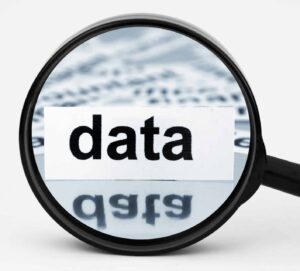
Data-Driven Decisions: The Role of Active and Passive Data in Product Strategy
Data is an increasingly important component of decision-making in today’s fast-paced business environment. The availability of vast amounts of data has allowed organizations to gain valuable insights into their customers, products, and markets. However, not all data is created equal. Recently, my team and I read the book, “Competing Against Luck” by Clayton Christensen and although the book’s main focus is on Christensen’s Jobs-To-Be-Done theory, towards the end of the book, he talks about active vs. passive data and the importance for organizations to understand the differences between the two for driving product innovation and growth.
Active data refers to data that is actively sought out by an organization through direct engagement with users. This can include data gathered through surveys, interviews, focus groups, user testing, A/B testing, and other research methods. Passive data refers to data that is collected passively, without any active participation from users or customers. This can include data gathered through social media, website analytics, user logs, and other sources that capture customer behavior and interactions with the product.
So, which type of data is more important? The answer is both.
 Active data is typically more reliable and accurate than passive data because it is gathered with the intent of answering a particular question or addressing a specific need. As Christensen explains in his book, active data is “explicit, measurable, and objective” and is often more suitable for identifying specific pain points or answering specific questions related to customer needs, preferences, and behaviors. However, active data will often not tell you what the customer cannot articulate or imagine yet and will usually not lead to disruptive innovation.
Active data is typically more reliable and accurate than passive data because it is gathered with the intent of answering a particular question or addressing a specific need. As Christensen explains in his book, active data is “explicit, measurable, and objective” and is often more suitable for identifying specific pain points or answering specific questions related to customer needs, preferences, and behaviors. However, active data will often not tell you what the customer cannot articulate or imagine yet and will usually not lead to disruptive innovation.
Passive data is often more abundant than active data and can provide valuable insights into customer behavior, usage patterns, and trends. However, working with passive data is more like solving a puzzle than crunching numbers. To derive meaningful insights from passive data, organizations have to put clues together, connect the dots and relentlessly ask Why? But when collected, analyzed, and used effectively, passive data can uncover some fundamental and unarticulated needs of the customer that do not usually surface from active data and can be crucial for developing deep customer empathy and for identifying innovation opportunities.
The challenge for organizations is to strike a balance between active and passive data depending on the context and type of decisions that are being made. Too much reliance on passive data can lead to incomplete or inaccurate insights and lack of business focus, while too much reliance on active data can lead to a narrow focus, lack of innovation, and a failure to capture the broader context of customer behavior and preferences.
 One approach to balancing active and passive data is to use them in combination. An organization could use active data to gather specific insights into customer needs, and then use passive data to validate and supplement those insights. For example, after developing a new feature using active data gathered through User Testing and A/B Testing, overlay passive data by reviewing how users interact with the feature by using website and user behavior analytics tools to validate and tweak product decisions made during development. This can help ensure that decision-making is based on a comprehensive understanding of customer needs, behaviors, and their interactions with the product.
One approach to balancing active and passive data is to use them in combination. An organization could use active data to gather specific insights into customer needs, and then use passive data to validate and supplement those insights. For example, after developing a new feature using active data gathered through User Testing and A/B Testing, overlay passive data by reviewing how users interact with the feature by using website and user behavior analytics tools to validate and tweak product decisions made during development. This can help ensure that decision-making is based on a comprehensive understanding of customer needs, behaviors, and their interactions with the product.
It is also important for organizations to recognize the limitations of both active and passive data. As Christensen notes in his book, “data cannot tell you what you don’t know to ask.” This means that even with the best data and analysis, organizations may still miss important insights if they are not asking the right questions or looking at the data from the right perspective.
The balancing act of using active and passive data in decision-making requires careful consideration and a thoughtful approach. Organizations need to understand the strengths and limitations of both types of data and use them in combination to gain a comprehensive understanding of customer needs. By doing so, organizations can make decisions that are based on a deeper understanding of their customers and markets.
